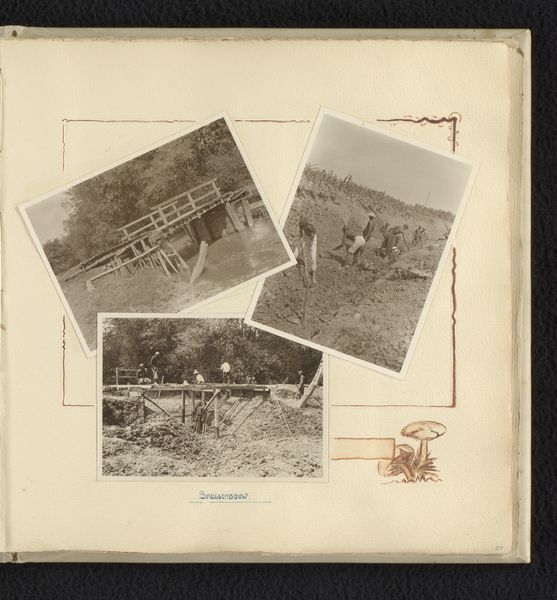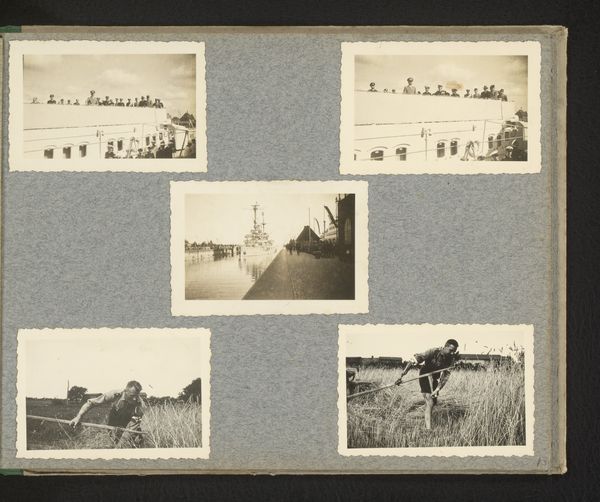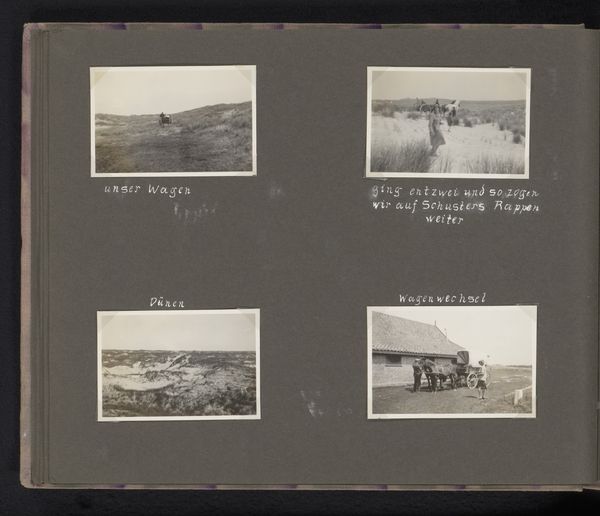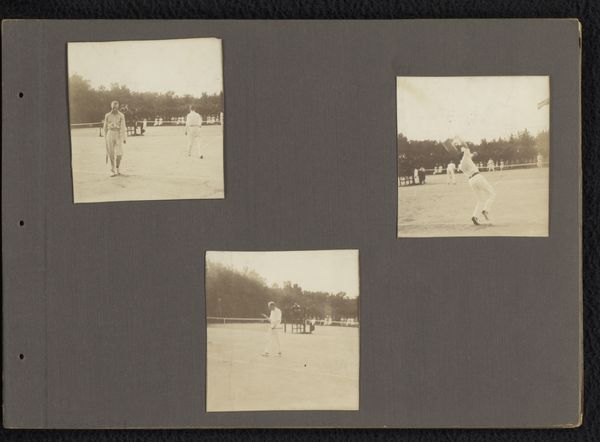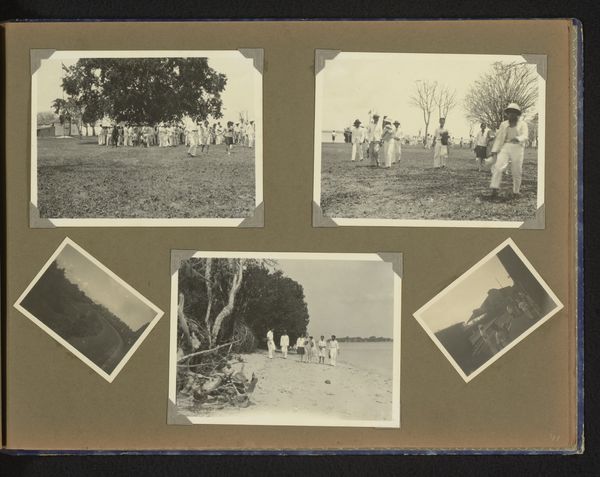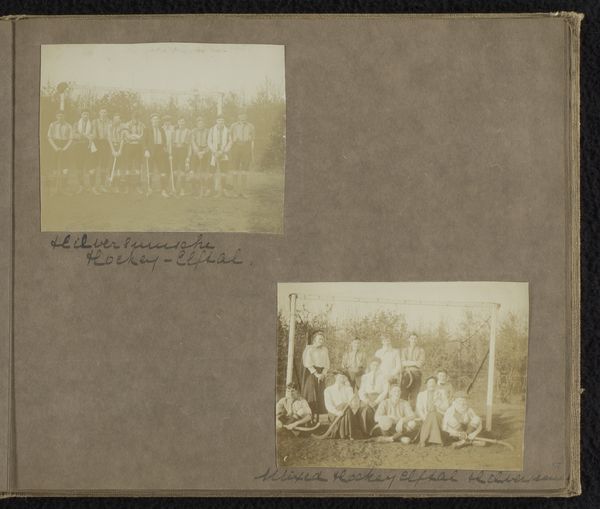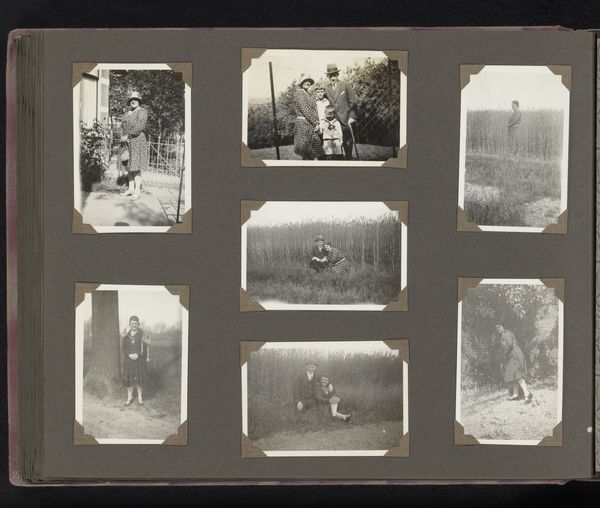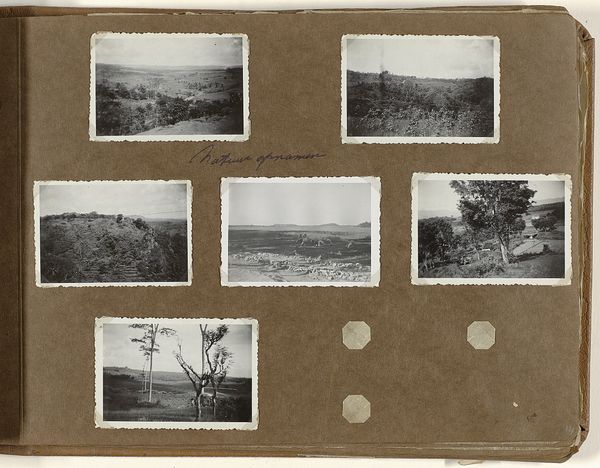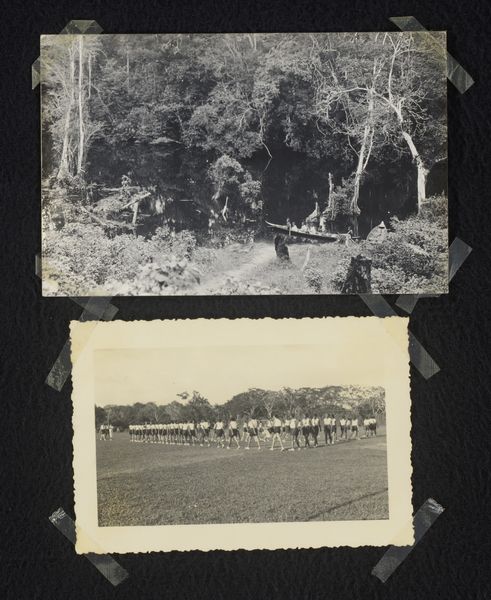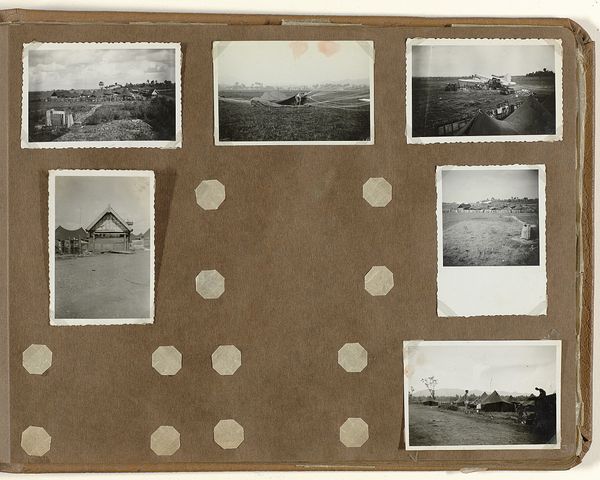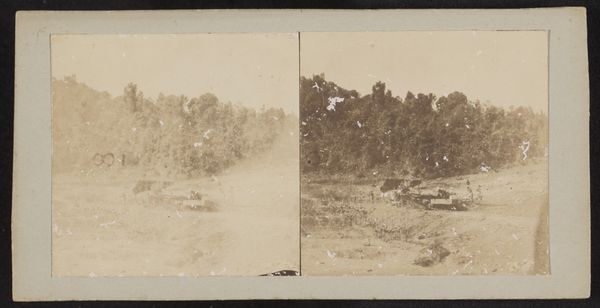
print, photography, albumen-print
#
portrait
# print
#
photography
#
genre-painting
#
albumen-print
#
realism
Dimensions: height 240 mm, width 300 mm
Copyright: Rijks Museum: Open Domain
Curator: We're looking at an intriguing series of photographs from 1912 by Carolina (Loentje) Frederika Onnen. Titled "Hockeywedstrijd tussen clubs uit Hilversum en Amsterdam," these albumen prints offer a fascinating glimpse into the world of women's sports during that era. What's your first take? Editor: Well, right away, the sepia tones and the album setting really ground this in its time. It’s interesting to see how this sport, now a huge spectacle, was documented with this kind of...intimacy, almost like a family album. You can almost feel the texture of the photographic paper itself. Curator: Precisely. Considering the broader social context, photography like this played a significant role in shaping the visual narratives of female athleticism. These images subtly challenge Victorian ideals of femininity by showcasing women engaged in robust, physical activity, expanding what was deemed acceptable within gender roles. The politics of representation here are striking. Editor: Absolutely. And if you look closer at the gear, the wooden sticks, the somewhat formal attire of the players—it all speaks to the era's constraints on material and the means of production for even recreational sporting goods. We are far from the high-performance materials that characterize hockey today. You can also see how those material conditions influenced their movement. Curator: The images also provide a poignant insight into the social lives of these women, too. I’m immediately struck by the fact that while we might see sporting events as promoting equality today, these were usually limited to privileged social groups. Editor: True, the images evoke a sense of community fostered through sport. While the compositional quality isn’t aiming to compete with “high art”, the value is that they act almost as documents or souvenirs. Considering the process of early photography and albumen prints, in particular, one wonders if there may have been issues with production considering some of the players are cut-off. Curator: So, looking at this series then, it's not merely a collection of images of hockey. It's a complex, intersectional record that reveals elements of class, gender identity and resistance at the turn of the century. Editor: It reveals how the simplest documentation of everyday practices carries this quiet undercurrent of innovation. Curator: Exactly, leaving us to ponder about labor, sport and the camera lens during a transformative period in social history. Editor: A compelling reminder of what we've lost in our age of infinite images and what remains from simpler forms.
Comments
No comments
Be the first to comment and join the conversation on the ultimate creative platform.
